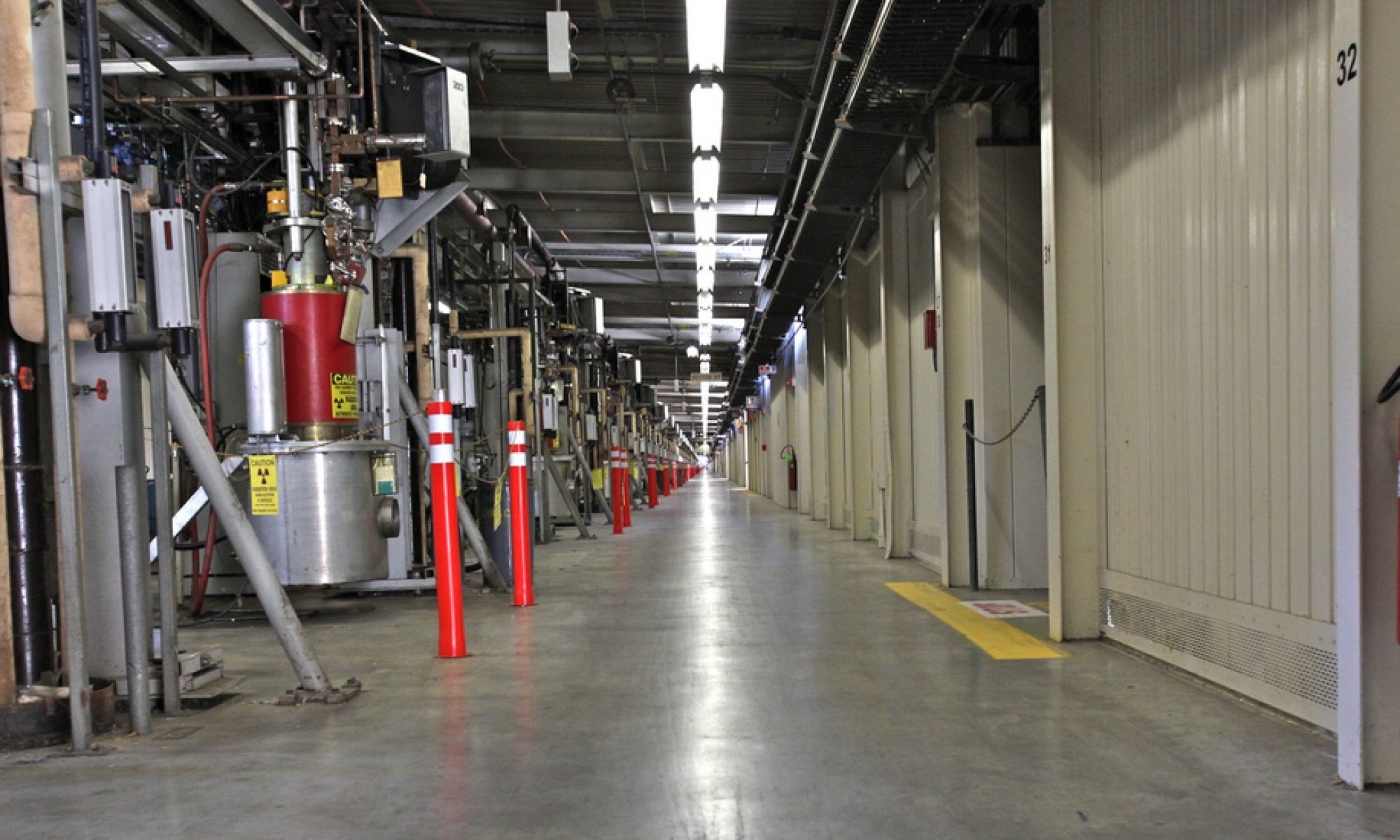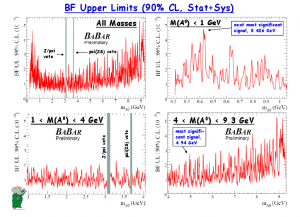When we proposed the taking of the world’s largest sample of Upsilon(3S) mesons (which then led also to the taking of the world’s largest sample of Upsilon(2S) mesons), a key component of the proposal was coverage of low-mass Higgs boson scenarios. Such scenarios can arise in extensions of the minimal supersymmetric Standard Model, and could have eluded detection even at the most famous electron-positron “Higgs factory” – LEP at CERN.
Our friends at the CLEO experiment released their results in a search for a low-mass Higgs boson, decaying into muons or tau leptons, just months after we concluded our data-taking on the Upsilon(3S) and Upsilon(2S) [1]. It was a bit frustrating to see CLEO reach this milestone before we had analyzed the data. But, they had at their disposal just 21.5M Upsilon(1S) decays. In contrast, BaBar collected 122 million Upsilon(3S) and 99 million Upsilon(2S); contained in the two of those samples is a rich subsample of 24 million Upsilon(1S) produced by the charged two-pion transition from the parent Upsilon(3S) or Upsilon(2S) mesons. Taken together, BaBar possesses the world’s most powerful sample of mesons to throw at the question of whether or not there is a low-mass Higgs boson.
This past week, at the Aspen Conference on Particle Physics, BaBar unleashed its first results in the search for the low-mass Higgs decaying into leptons. Presented by Kevin Flood from the University of Wisconsin-Madison, BaBar has performed an extensive search for the process of an Upsilon(3S) decaying into a low-mass Higgs by emitting a photon [2]. This means of searching for the Higgs was first suggested over thirty years ago by Frank Wilczek [3].
In contrast to the CLEO result, which only looked for a Higgs up to a mass of about 3.6 GeV, BaBar went all the way up above the Upsilon(1S) mass at 9.46 GeV. This was important for several reasons. First, simply covering the mass range is critical to conclusively ruling in or out the Higgs. In addition, there are several places in the mass spectrum of specific interest, most importantly the mass region of the bottomonium ground state [4]. Why? Since the bottomonium ground state and certain hypothetical low-mass Higgses share the same quantum numbers, nature lets them mix one into the other. It could be that the state we thought was the bottomonium ground state is mixing with a Higgs, and when it does so it can then decay readily into leptons. We were anxious to see if a “bump” in the muon spectum appeared at that region.
CLEO excluded the rate at which this decay to a Higgs occurred down to the level of a few parts per million, the best limits to date on such a process. BaBar, with just its Upsilon(3S) sample, has improved on the CLEO results in most of their mass range by a factor of two, and above their mass range has set the most stringent limits to date (down to a few parts per million) on a low-mass Higgs boson produced in this way. We see no evidence that the bottomonium ground state decays to leptons, and from this data we conclude that the rate at which the ground state decays to muons is less than 0.8%. The limit curves in the full mass region, and in several zoomed regions, are shown below.
Mining this rich, unique sample of mesons will continue, as we press deeper into space of exotic physics that can be achieved with a precision experiment at the luminosity frontier.
[1] http://arxiv.org/abs/0807.1427v1
[2] http://indico.cern.ch/getFile.py/access?contribId=63&sessionId=15&resId=1&materialId=slides&confId=38534 and available on the arXiv at http://arxiv.org/abs/0902.2176v1
[3] Phys.Rev.Lett.39:1304,1977. http://www.slac.stanford.edu/spires/find/hep/www?irn=241814


